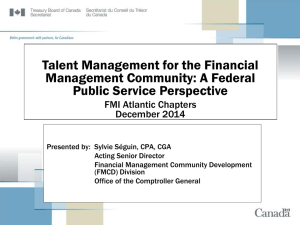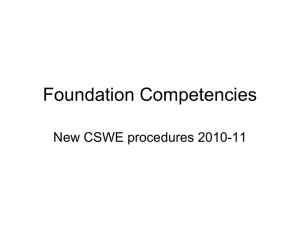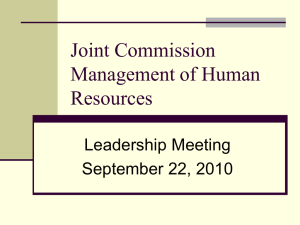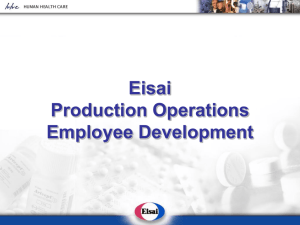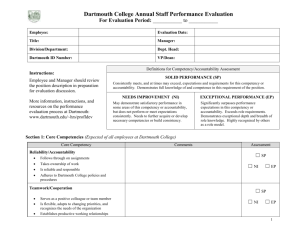The 4 Quadrants of Leadership - California Payroll Conference
advertisement
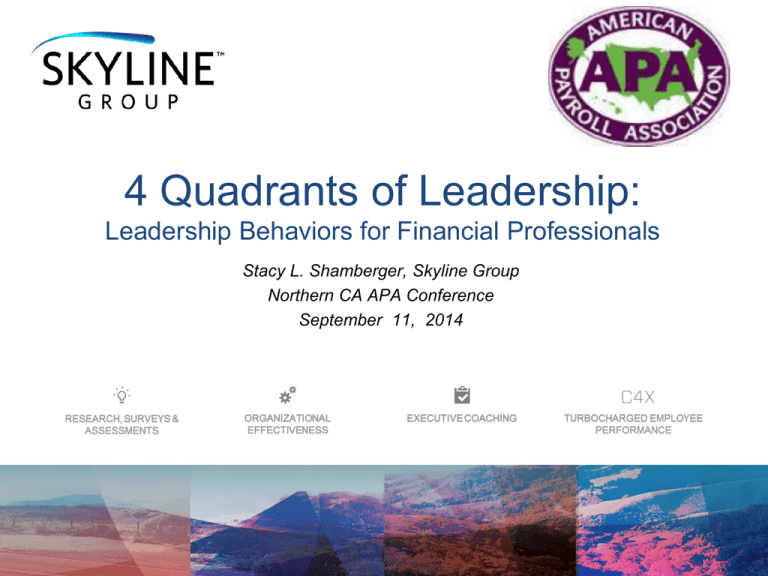
4 Quadrants of Leadership: Leadership Behaviors for Financial Professionals Stacy L. Shamberger, Skyline Group Northern CA APA Conference September 11, 2014 Line-up • • • • • • • • Leadership Overview The 4 Quadrants of Leadership Leadership Competencies 360 Degree View Balanced Leader Trends in Impact and Measurable Success Self Insight and Awareness Fun! Leadership – Made or Born? The most dangerous leadership myth is that leaders are born-that there is a genetic factor to leadership. This myth asserts that people simply either have certain charismatic qualities or not. That's nonsense; in fact, the opposite is true. Leaders are made rather than born. Warren G. Bennis, from his book; On Becoming a Great Leader Another Point of Debate The Real Deal Team Leader Innovate Influence Communicate Integrity Manager Individual Contributor Execute Set Goals Problem Solve Productivity Moving from Abstract to IMPACT! Competency Behavior Impact The 4 Quadrants of Leadership Self Awareness, Insight COMPETENCY ME OTHERS 1. 2. 3. 4. 5. 6. 7. 8. 9. 10. 28. KEY FAIR GOOD VERY GOOD EXECELLENT Competencies of Quadrant 1 • • • • • • • Emotional Control Flexibility Integrity Resilience Self-Confidence Executive Presence Work/Life Balance Competencies of Quadrant 2 • • • • • • • Assertiveness Conflict Resolution Influencing Others Listening Partnering and Relationship Building Teamwork Verbal Communication Competencies of Quadrant 3 • • • • • • • Creativity and Innovation Entrepreneurship External Awareness Inspirational Vision Organizational Awareness Service Motivation Strategic Thinking Competencies of Quadrant 4 • • • • • • • Coaching and Mentoring Customer Focus Delegation Effectiveness Monitoring Performance Planning and Organizing Thoroughness Self Rating COMPETENCY ME Emotional Control G G VG F G VG F 1. 2. 3. 4. 5. 6. 7. 8. 9. 10. 28. Flexibility Integrity Resilience Self Confidence Executive Presence Work Life Balance OTHERS F G E G VG VG G KEY FAIR GOOD VERY GOOD EXECELLENT Development Opportunities Strengths Weaknesses Balanced Leader Self Rating COMPETENCY ME Emotional Control G G VG F G VG F 1. 2. 3. 4. 5. 6. 7. 8. 9. 10. 28. Flexibility Integrity Resilience Self Confidence Executive Presence Work Life Balance OTHERS F G E G VG VG G KEY FAIR GOOD VERY GOOD EXECELLENT On Your Mark Get Set, Grow! Panic Zone Growth/Learn Comfort Zone CZ = Stuck Most Familiar Strengths Old Habits Lazy GZ = Transformation! Growth Zone Little familiarity Risky Temptation to revert Growth Leads to…. • • • • An expansion and Integration of skills Confidence using new knowledge Mastery An improved you! Our Blind Spots The 360 View 70/20/10 70 % Learn from Experience on the Job 20% Learn from Others 10% Development Programs/Formal Learning Types of Experiences We learn from 3 different types of experiences: Assignments Bosses (good and bad) Hardships 70/20/10 • What experiences can I plan (70%)? • Who can I learn from? How (20%)? • What kind of structured development will help me the most (10%)? Impact How Leaders Make an Impact Morale Employee Turnover Productivity Vision Innovation Interconnected Impact Business Strategy Leadership Culture Strategy Execution Business Results Overall Impact Companies reporting strong leadership development programs are 1.5 times more likely to be found atop Fortune Magazine's “Most Admired Companies” list. -Consulting Psychology Journal, 2003, “The Return on Investment of Leadership Development: Differentiating our Discipline” Among employees who say their company offers poor development opportunities, 41% plan to leave within 12 months (versus only 12% who rate their opportunities as excellent). High turnover isn't cheap - the cost of losing a typical worker is approximately $50,000. For managers, the cost is much higher. -Business Week, 2009 Productivity Impact American Express Leadership ROI Study 2010 Financial Impact • Average increase of 5.2% in per employee productivity; valued at $44,380 per employee • Average increase of 16.3% in cash flow; valued at $9,673 per employee • Average increase of 6% in market value; valued at $8,882 per employee • Increase company-wide profit margins by as much as 47%. • Increase in sales (up to 6.5%) • Notable decrease in turnover -Jackson Leadership Systems, Inc., 2006, “Leadership Development ROI: Using Talent Management to Drive Market Value” -Consulting Psychology Journal, 2004,“The Return on Investment of Leadership Development: Differentiating our Discipline” Talent Development Reporting Principles • What data should we collect and how should the measures be defined? • What do CFOs, CEOs and other senior leaders want to see and how should it be presented? • How can we show the important role learning plays in achieving organizational goals? TDRp addresses the vital need for enhanced executive-level reporting on talent development, much like GAAP (Generally Accepted Accounting Principles) provides reporting principles for finance. Center for Talent Reporting www.centerfortalentreporting.org 2014 Snap Shot Trends Source: Bersin by Deloitte December 2013 Stacy Shamberger twitter: @StacyShamberger e-mail:shamberger@skylineg.com





